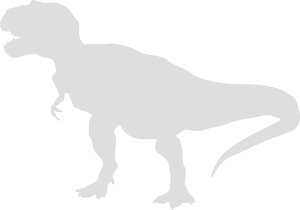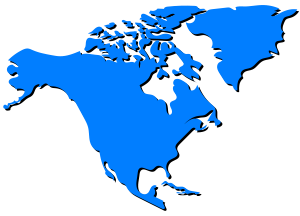Every month, 100,000 readers use the Dinosaur Database, but we receive no support from you. Developing and updating the database requires a lot of work. If you want it to remain open and be updated, please support us via the "Buy us a coffee" button available on every page or via the Support page.
Dinosaur: Allosaurus anax

| Length*: | 11 m | 36.1 ft |
| Weight*: | 4.6 t | 10,141 lb |
*The largest known specimen
Period
Epoch: Late Jurassic
Stage: Late Kimmeridgian-Early Tithonian
Years: 154.8–145 Ma
Details
Status: valid
Author: Danison et al
Year: 2024
Distribution
Area: North America
Country: USA
Region: Oklahoma
Formation: Morrison
Description
Allosaurus anax
Allosaurus anax is a newly described species of the genus Allosaurus, a large theropod dinosaur that lived during the Late Jurassic period, approximately 153–145 million years ago. The species name “anax,” meaning “king” or “lord” in Greek, honors its remarkable size and its association with the fossil material previously attributed to Saurophaganax maximus. Fossils of Allosaurus anax were recovered from the Kenton Member of the Morrison Formation in western Oklahoma, USA, a site rich in Late Jurassic dinosaur diversity.
Physical Characteristics
Allosaurus anax is distinguished by several unique skeletal features, including:
- A postorbital bone that lacks the rugose ornamentation present in other species of Allosaurus.
- Hourglass-shaped dorsal centra with prominent pneumatic foramina.
- Nearly vertical postzygapophyses on some cervical vertebrae.
- A thickened bulge on the posterior border of the ventral bar of the postorbital.
This species reached a size greater than other known species of Allosaurus, with some elements suggesting individuals could exceed 11 meters (36 feet) in length. Histological analysis of the femora indicates skeletally mature individuals.
Diet and Feeding Habits
Like other members of its genus, Allosaurus anax was a carnivore, likely preying on large herbivorous dinosaurs such as Apatosaurus and Diplodocus. Its robust teeth and jaw morphology suggest it was an active predator, capable of slicing through tough flesh and bone.
Habitat and Distribution
The fossils of Allosaurus anax were discovered in the Kenton Member of the Morrison Formation, which correlates with the Brushy Basin Member. This formation represents a semiarid floodplain ecosystem with abundant vegetation, rivers, and lakes. The area was home to a diverse array of dinosaurs, including sauropods, stegosaurs, and other large theropods, making it a highly competitive ecological niche.
Behavior and Social Structure
While direct evidence of behavior is lacking, Allosaurus anax may have exhibited social behavior similar to other Allosaurus species, potentially hunting in groups to take down large prey. Its adaptations for powerful jaw movements and its large size would have made it a dominant predator in its ecosystem.
Discovery and Research
The holotype of Allosaurus anax (OMNH 1771) includes a postorbital bone, cervical vertebrae, dorsal centra, and other associated elements recovered from the Kenton 1 Quarry. Initially attributed to Saurophaganax maximus, subsequent research demonstrated these fossils to represent a distinct species of Allosaurus. The taxonomic revision was formalized in 2024, distinguishing Allosaurus anax from other members of its genus based on its unique skeletal features.
Saurophaganax maximus and Allosaurus anax
The origins of Allosaurus anax are deeply tied to the history of the taxon Saurophaganax maximus. Fossil material attributed to S. maximus was first discovered in the Kenton Member of the Morrison Formation during the 1930s. For decades, these fossils were considered to represent a distinct genus and species of giant theropod dinosaur, differentiated from Allosaurus fragilis by unique features such as a larger size, lack of cranial ornamentation, and differences in vertebral anatomy. However, as paleontological techniques and understanding of theropod diversity advanced, doubts began to emerge about the distinctiveness of Saurophaganax maximus.
Recent studies revealed that some of the defining characteristics of S. maximus were either misinterpreted, attributable to taphonomic deformation, or shared with Allosaurus. Additionally, certain elements originally used to diagnose S. maximus, such as vertebrae with accessory laminae, were found to belong to sauropods recovered from the same quarry rather than a theropod. This led to the conclusion that S. maximus was a nomen dubium, meaning its holotype material could not definitively be assigned to a unique taxon.
In the process of re-evaluating the Kenton 1 Quarry fossils, paleontologists identified distinct autapomorphies (unique characteristics) in some theropod material that separated it from Allosaurus fragilis and Allosaurus jimmadseni. This included a lack of cranial ornamentation on the postorbital bone, nearly vertical postzygapophyses on cervical vertebrae, and other skeletal differences. These traits warranted the establishment of a new species within the genus Allosaurus, which was named Allosaurus anax in 2024 to honor the legacy of Saurophaganax maximus and its connection to this remarkable new taxon.
This taxonomic revision has provided clarity to a longstanding debate in dinosaur paleontology and underscores the importance of rigorous re-examination of historical fossil collections. It highlights how even well-known taxa can undergo significant reinterpretation as new evidence and methodologies emerge.
Significance and Interesting Facts
- Allosaurus anax represents one of the largest species of the genus, potentially rivaling Allosaurus fragilis and Allosaurus jimmadseni in ecological dominance.
- Its discovery highlights the diversity of large theropods in the Late Jurassic Morrison Formation.
- The reclassification of material originally attributed to Saurophaganax maximus resolves longstanding taxonomic uncertainties about the Kenton 1 Quarry fossils.
Locations
Sources
Material: At least 4 individuals.
References: Danison, Andrew; Wedel, Mathew; Barta, Daniel; Woodward, Holly; Flora, Holley; Lee, Andrew; Snively, Eric (2024). "Chimerism in specimens referred to Saurophaganax maximus reveals a new species of Allosaurus (Dinosauria, Theropoda)". Vertebrate Anatomy Morphology Palaeontology.



